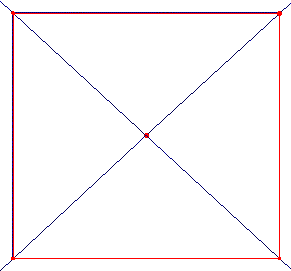2.4. Returning to Chess
We left the discussion on Chess as we observed that Klee preferred to stop iterations just at the edge of the chaotic behaviour of he system.
Let us finally consider the last step Klee did in building the background element of the painting.

How to stop the irregular behaviour of the iterative procedure? Klee thought that in order for the system to gain its rest, it was necessary for the spiral to be newly attracted by its centre. To obtain that (look at Animation 15) Klee shifted back one of the nodes of the spiralling cob-web, so that the spiral could finally reach the vanishing point.
Animation 15
Thus we also have a good reason for a side of the room being oblique instead of vertical: in general terms this corresponds to the preference Klee had for irregularity and instability, but it also holds a precise functional meaning (to allow the spiral to reach its centre).
We have now a complete genetic explanation (in the sense Klee attached to the phrase) for the structure of the background, and the bare empty room achieves its definitive aspect. Really we are facing something similar to the spiral shell of a nautilus (which was present in Klee’s collection of marine specimens and photos): here the space is built according to the rhythm imposed by a spiral iterative growing process, which mimes similar growing processes in nature.